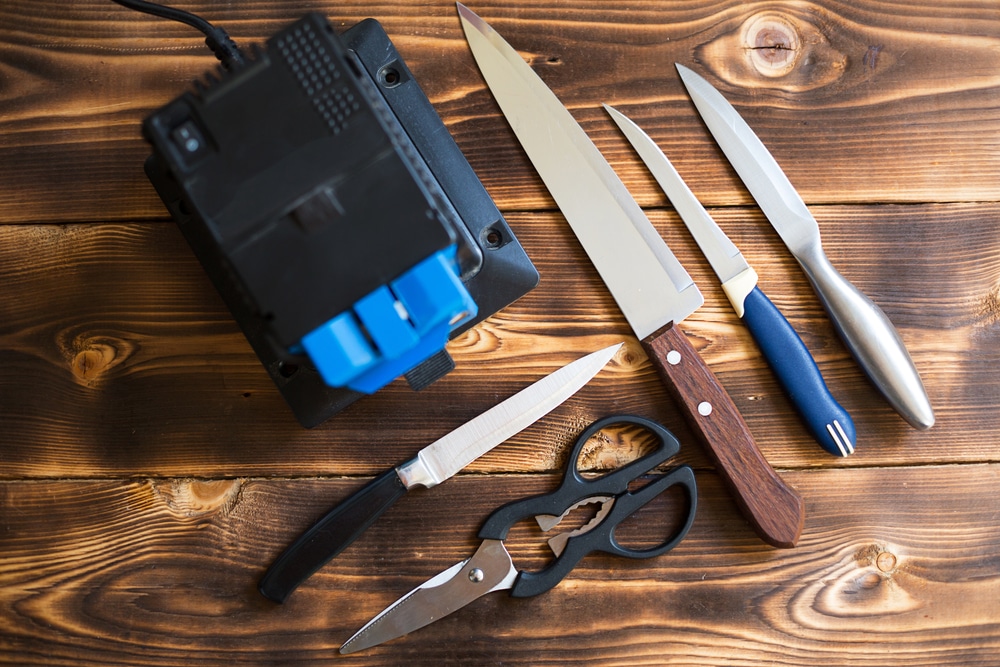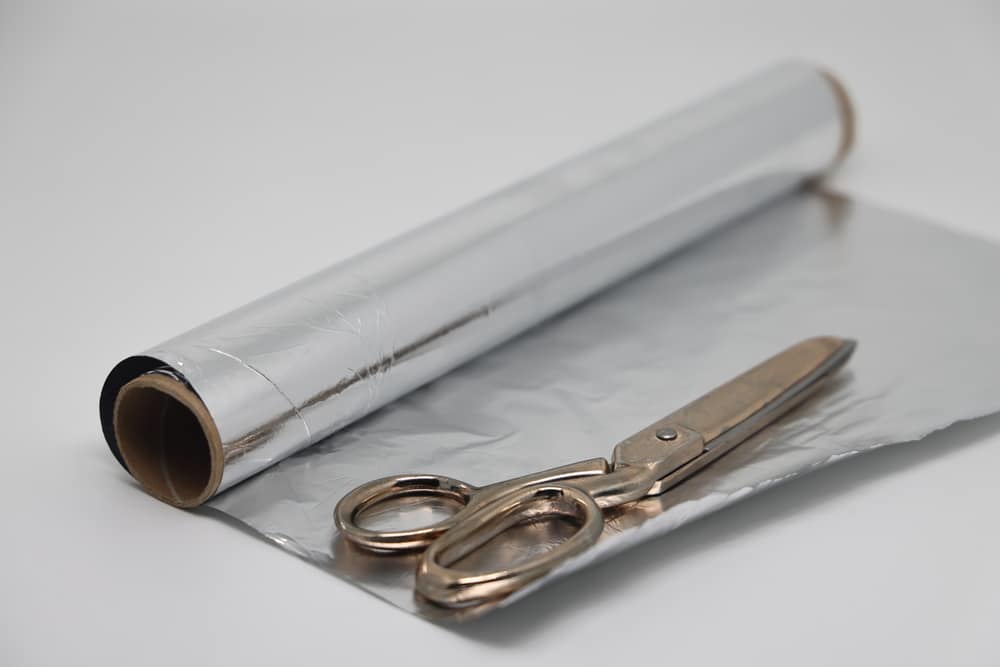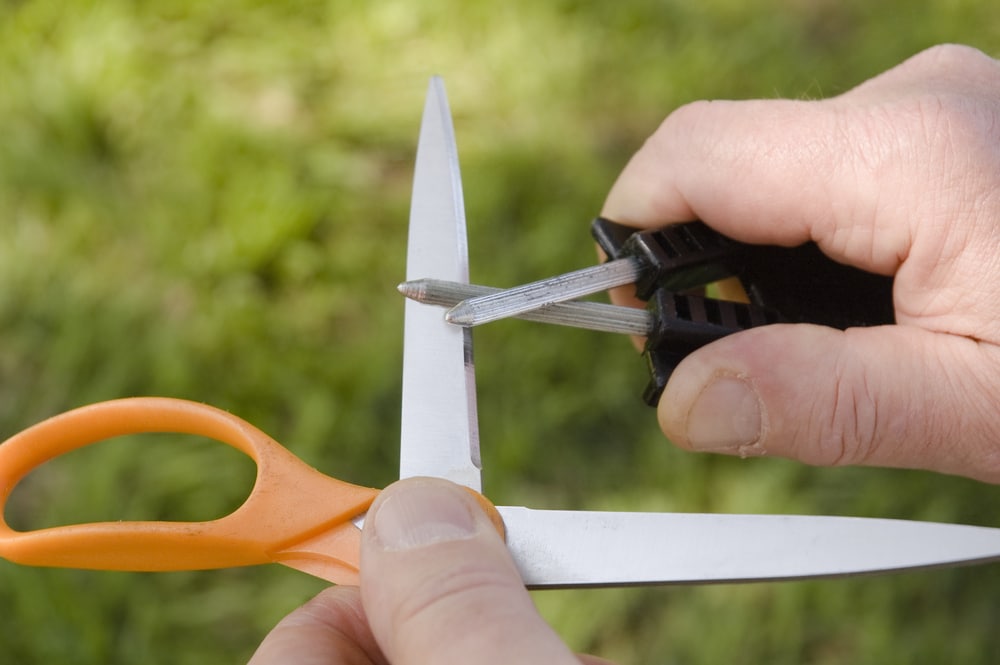Do you know how to sharpen scissors with a knife sharpener? At first, the entire concept of potentially sharpening scissors may sound scary, but we are here to let you know that it is not as dangerous as you would think.
In all honesty, sharpening scissors with a knife sharpener is one of the safer ways of getting that scissor blade back to its original state. It allows you to get a sharper cutting edge, but you do not have the same risks involved where you could potentially cut yourself.
But with that in mind, let’s go through the different steps you need to be aware of when sharpening scissors at home.
The Main Problem With Scissors
The main problem with scissors is that they get blunt far too quickly. Before you know it, those razor-sharp scissors you once knew are struggling to cut through anything. Trying to use dull scissors is a nightmare. It feels pretty impossible to cut anything, so your only options are to either throw them away or consider sharpening your scissors’ blades.
So, this is an action you may have to do many times, but as you will see, there’s nothing difficult.
Step 1: Take Apart Your Scissors
The first step is taking your scissors apart. This should be easy to do since they are often held together by a single screw that holds the scissor blades together. Remove it, so you have both parts of the scissors in your hand.
Some people would argue that this is not entirely necessary, but it does make a difference in accessing those scissor blades.
Step 2: Sharpening the First Blade
Next, you need to sharpen the first blade, so get your knife sharpener and make sure you have the inner side part of the blade in the actual knife sharpener. Remember, you will only do one blade at a time, and prepare to spend some time working on this to get the razor sharpness you are looking for.
Step 3: Using the Knife Sharpener

Next, you want to slide the blade flat along the knife sharpener and do this around 10 to 15 times. As you do this, pay close attention to the bevelled cutting edge. You should start to see a sharp edge appearing as you use the knife sharpener. However, don’t stop as soon as you see that sharp edge emerging.
Step 4: Repeat With the Other Scissor Blade
Once you have finished with the first blade, repeat the entire process with the other blade. Make sure you run that bevelled edge over the sharpener the same number of times. The best way to get scissors sharp is to make sure you copy the same movements with both blades. That way, they remain identical, and they will ultimately cut better.
Step 5: Use the Scissors Sharpener Mechanism
The final step is to use the specially designed scissors sharpener gap. This involves you using the scissors on this sharpener and using the cutting motion time and time again. You need to do this at least 15 times to make sure your scissor sharpener actually leaves you with razor-sharp scissors.
Step 6: Wipe the Edges
Once you are finished sharpening scissors, you need to wipe down the blades to make sure they are clean. However, be careful, as the knife sharpener will always do a fantastic job when it comes to being able to sharpen scissors.
Other Ways to Sharpen a Pair of Scissors
While using a knife sharpener is a very easy method, what happens if you do not have one? Are you destined to be left with blunt scissors for the rest of the time? Absolutely not, as you do have many other options available to you if you wish to sharpen scissors.
Using Sandpaper
Are your scissor blunt? Cut some sandpaper with them and it will sharpen them back up! #TuesdayTip pic.twitter.com/MOW76e5aEU
— Living Crafts (@LivingCraftsUK) October 4, 2016
Most people will have some sandpaper around their home, and it is a great way to sharpen scissors, even though it does require some work. You should only use medium grit sandpaper for this purpose, as you want to sharpen and not damage the blade.
The key is to actually use the scissors to cut into the sandpaper. Do this a few times, then turn the scissors over to sharpen the other side. Cutting through the rough texture on the sandpaper should be enough to get that blade nice and sharp once more.
Using Aluminium Foil
This one surprises people, but you can use aluminium foil as a scissor sharpener. Even though it does sound strange, it is something that can get some pretty good results.

Once again, you need to use the scissors to cut the foil, and we recommend folding the foil over itself a couple of times. The aim here is to use the foil to help smooth down any nicks on the blades, as those nicks can create the impression your scissors are blunter than they actually are.
Using Steel Wool
If you have some steel wool around, prepare to use it the same way as the foil and sandpaper method. Once again, you will be cutting into the wool if you want to sharpen scissors, and this is a method that also performs exceptionally well.
Using a Sharpening Stone
A sharpening stone has been used for sharpening knives for years, and they do work well when it comes to scissor sharpeners too. With a sharpening stone, you will find that one side is rough, and the other side of the sharpening stone is smooth.
You need to press the blade against the right sides of the sharpening stones and move the blade back and forth along it: this means you use it in the same way as if you were sharpening kitchen knives.
Just remember to focus on the side of the blade and keep the blade horizontal to the stone. That is the best way to get the sharpened edges you are looking for.
Additional Tips On Scissor Sharpening
Finally, we have some additional tips for restoring dull scissors. After all, you may never have tried to bring old scissors back to life before and may be concerned about whether you should have them professionally sharpened instead.
The Key to How to Sharpen Scissors at Home
The key here is to make sure you sharpen along the entire length of both blades. When sharpening scissors, you must hold them tightly in your hand, making sure you keep the blades at the same angle as you sharpen them.
The Pressure
You only need to apply light pressure with the scissors, and don’t worry about securely clamping them down. As long as you have a good grip, then you should be fine.
Try and apply the same pressure along the blade lengths. This should then result in the inner blade having the same cutting abilities once finished. Also, holding at the same pressure should help eliminate the chances of rough edges along the inner edge.
Treating a Sharpening Stone
If you want the best results from your sharpening stone, then soak it in machine oil overnight. This helps the stone perform better, leading to sharper scissors with little to no effort.
Dealing With Rough Edges
If you have rough edges, use a grinding stone to remove them. However, if you use an electric sharpener, the chances of these edges occurring are reduced.
If you have them, you can also start cutting aluminium foil to help remove them. That is how easy it can be, but just remember to rotate the scissors to check the second scissor blade.
Test After Sharpening
The final tip is to test after sharpening. Check the scissors’ handles meet correctly, as there’s nothing worse than blades being out of line when you have the scissors closed. If this is the case, you need to adjust the screw holding the blades together.
Sharpening Dull Scissors With a Knife Sharpener
And that is how to sharpen scissors with a knife sharpener, and as you can see, there’s nothing difficult when it comes to using knife sharpeners for scissors. When sharpening scissors, the key thing is to take your time and not rush it.
By doing this, you will get the cutting edge you are looking for and can then continue to use your scissors for some time to come.
Are you ready to sharpen your scissors with our method? Let us know how it goes in the comments!
Additional Resources
- How to Sharpen a Knife Without a Knife Sharpener
- How to Open a Can Without a Can Opener
- How to Use a Can Opener
- How to Use a Food Flask
- How to Use Dough Hooks on a Hand Mixer
Tom is a former chef turned full-time food blogger. He has always been passionate about food, and loves nothing more than experimenting in the kitchen and sharing his recipes with others. Tom’s blog is one of the most popular food blogs on the internet, and he has won numerous awards for his cooking. When he’s not blogging or cooking, Tom enjoys spending time with his wife and two young children.

